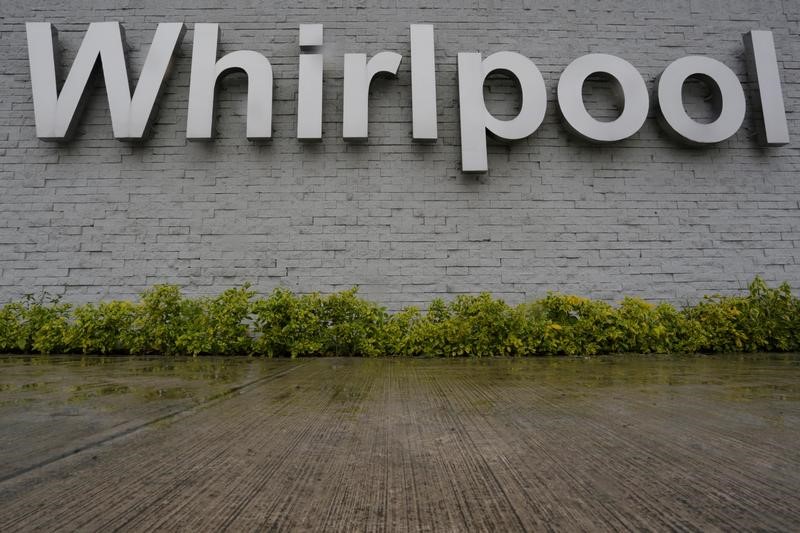Microsoft’s data-center shortages to persist longer than expected - Bloomberg
Investing.com -- According to S&P Global, U.S. appliance manufacturer Whirlpool Corp (NYSE:WHR).’s credit measures were weaker than expected for the fiscal year 2024, ending on December 31, 2024. The company’s S&P Global Ratings-adjusted leverage fell to 5.2x during this period, largely due to persistent weak operating conditions in its key North American major domestic appliance (MDA) market.
The company’s outlook was revised to negative from stable, and all ratings were affirmed, including the ’BBB-’ long-term and ’A-3’ short-term issuer credit ratings. This negative outlook reflects the possibility of a lower rating for Whirlpool within the next 24 months if it does not significantly improve its S&P Global Ratings-adjusted leverage.
Whirlpool is predicted to improve its S&P Global Ratings-adjusted leverage to below 4.5x by the end of 2025 and to around 4.0x by the end of 2026. This improvement is expected to result from a 10% increase in its S&P Global Ratings-adjusted EBITDA due to cost cuts and the divestitures of its margin-dilutive Indian, European, and Middle East and North Africa (MENA) businesses.
To maintain an investment-grade rating, the company needs to reduce its S&P Global Ratings-adjusted leverage to below 4.0x by the end of 2026. As this is not currently anticipated in S&P’s base-case forecast, Whirlpool may need to undertake further creditor-friendly actions beyond those already announced to retain its current rating.
Despite a 0.4% decline in its organic net sales in 2024, Whirlpool is expected to strengthen its credit ratios by increasing profits and repaying debt. The North American MDA segment saw a 5% decline in revenue, while other segments reported increased revenue. However, the company’s business in North America continued to suffer from an unfavorable domestic sales mix.
Whirlpool plans to expand its S&P Global Ratings-adjusted EBITDA by about 10% in 2025, primarily through cost cuts. The company announced an additional $200 million of planned cost savings in 2025 as it focuses on simplifying the business. It also plans to roll out new offerings throughout 2025, which are expected to improve its margins.
Whirlpool’s business risk was revised to satisfactory from strong. This revision considers the company’s profit decline over the past two years, market share declines in its key North American MDA industry, reduced size and scale following divestitures, and increased concentration in the North American and Latin American markets.
The company is moderately exposed to any potential tariffs imposed by the new U.S. administration. Whirlpool manufactures about 80% of what it sells in the U.S. domestically, with the remaining 20% produced in Mexico and China. The imposition of tariffs could lead to higher commodity prices, impacting the company’s margins.
The negative outlook reflects that a lower rating could be assigned to Whirlpool within the next 24 months if it does not significantly improve its credit metrics. This could happen if the demand for large appliances declines, Whirlpool loses share in its key markets, management fails to deliver incremental EBITDA, or the company does not exhibit financial policies conducive to deleveraging.
The outlook could be revised to stable if Whirlpool continues to improve its S&P Global Ratings-adjusted leverage and maintains it at less than 4.5x in 2025 and below 4.0x in 2026. This could occur if housing activity and appliance demand improve, the company expands its market share, achieves efficiency gains, reduces its dividend, or undertakes other creditor-friendly initiatives.
This article was generated with the support of AI and reviewed by an editor. For more information see our T&C.
